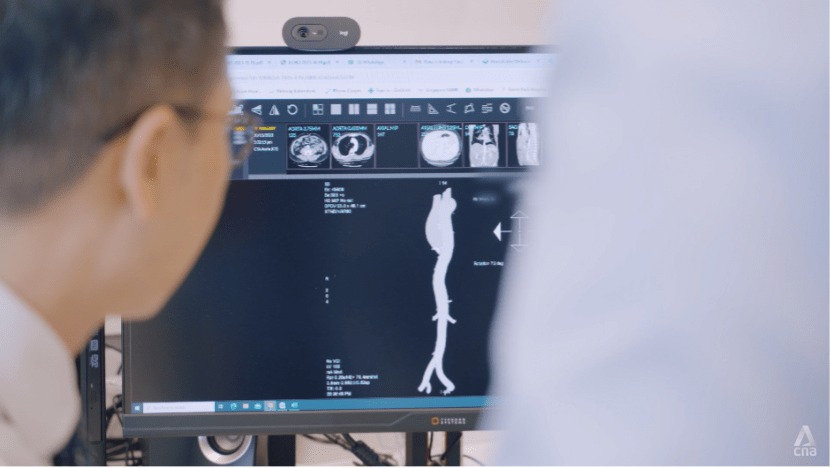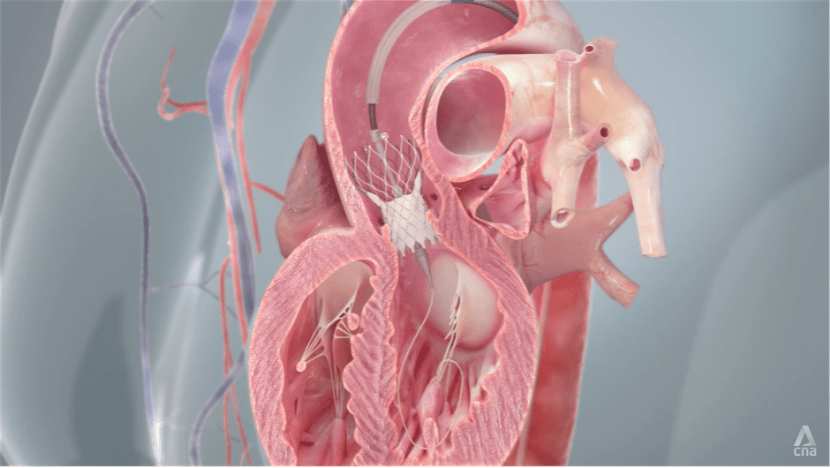Unlocking aortic stenosis
Transcatheter aortic valve implantation treats aortic stenosis without an open-heart surgery.

Dr Cliff Wong (left) and Dr Edgar Tay (right) say minimally invasive procedures can help patients with heart valve diseases such as aortic stenosis.

This audio is generated by an AI tool.
A conductor takes centre stage in a symphony orchestra. In our bodies, the heart takes centre stage, orchestrating life’s rhythm. But in the shadows lurks a condition that, when left untreated, can disrupt this symphony — aortic stenosis.
LURKING SHADOW
Aortic stenosis occurs when the valve of the heart does not open, and blood cannot flow normally.
“Aortic stenosis left untreated (means) your survival will decrease (to) less than 50 per cent over the coming two years,” says Dr Cliff Wong, an echocardiologist at the Asian Heart & Vascular Centre (AHVC).
UNCOVERING OPTIONS
Dr Wong’s colleague at AHVC, Dr Edgar Tay, an interventional cardiologist, shares that oftentimes when patients are diagnosed with aortic stenosis, their first worry is about whether they require surgery. Historically, patients diagnosed with aortic stenosis, or heart valve disease, are treated with open-heart surgery. Nowadays, there are less invasive treatment options.

Before deciding which type of surgery is best suited for the patient, cardiac imaging tests such as echocardiograms or CT scans will have to be done.
“The collaboration between the surgeon and imaging cardiologist can help reduce the risk of the complications related to procedures and actually choose the best methods for a better outcome and decrease the risk of the complications,” says Dr Wong.
A GAME CHANGER
Over the last 20 years of medical advancement, minimally invasive procedures, such as the transcatheter aortic valve implantation (TAVI), have allowed patients to be treated without opening the chest.

TAVI is a minimally invasive procedure during which a new valve is inserted through a small incision in the thigh area while the patient is under sedation or local anaesthesia. Patients are usually hospitalised for three to four days and are able to go back to their usual activities quite quickly.
“The idea is to give patients efficient treatment whereby their symptoms are removed and allow them to do what they love,” says Dr Tay.
Patients with Aortic Stenosis may avoid open-heart surgery due to advancements in treatment technologies.
While the collaboration between surgeons and imaging cardiologists can help reduce the risk of complications.
LISTEN TO YOUR BODY
Dr Tay shares that chest pains, feeling out of energy when exercising, and breathlessness are symptoms of aortic stenosis. As the disease progresses, patients can feel breathless even when at rest.
“Don't dismiss symptoms that are persistent or affecting your quality of life. Get the diagnosis early, and then go for treatment” says Dr Tay.
Produced in partnership with Asian Heart & Vascular Centre.












